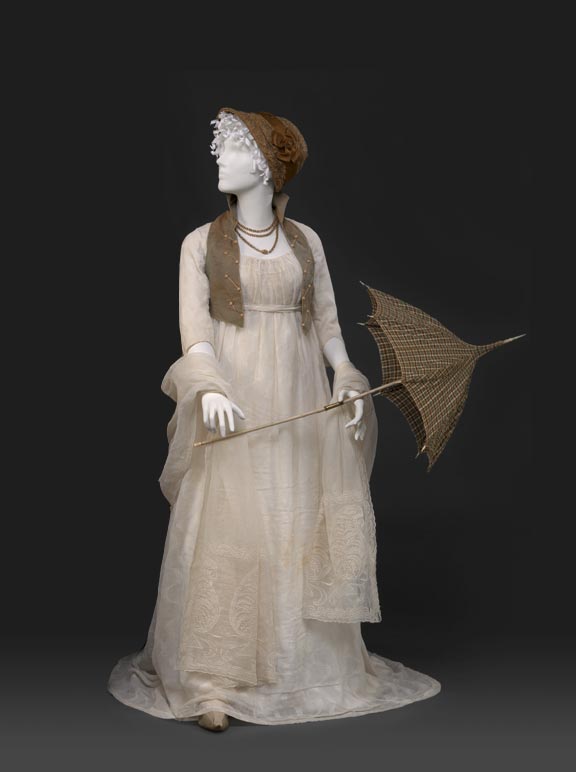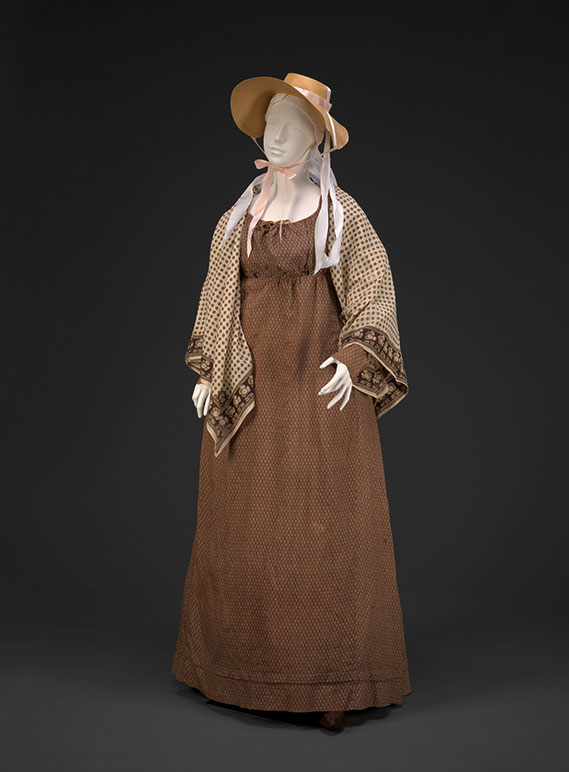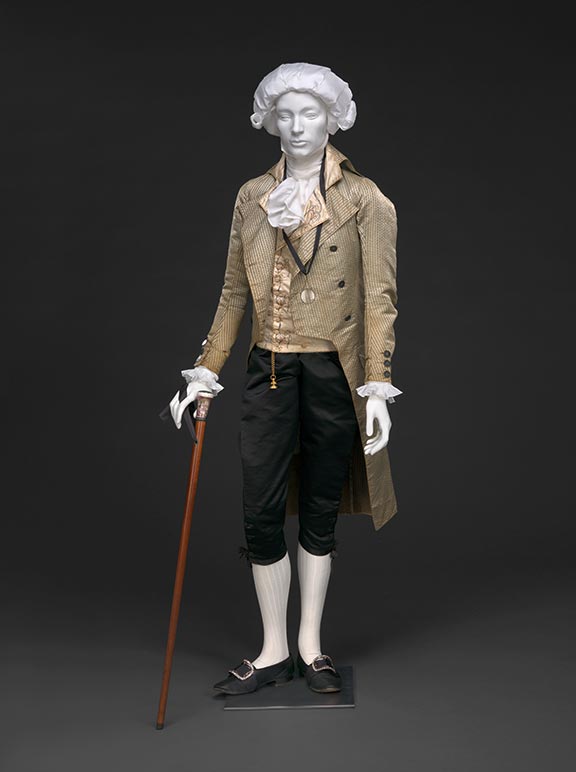Muslin Dress and Changeable Silk Vest
About 1798–1800
Style: The waistline is just under the bust and most of the skirt’s fullness has been moved to the back; however, this dress still retains some fullness in the front. The sleeves are three-quarter length; when above-elbow sleeves are introduced about this time, many found it as shocking as low necklines and clinging skirts. Dresses with trains are fashionable even for day dresses at this time, but will go “out” about 1806.
The vest’s masculine cut and strips of braid imitating the trim on military uniforms contrast with the delicate drapery of the muslin fabric.
Fabric: Some muslin dresses were pre-embroidered; in this case, the fabric has a geometric woven design.
The vest is made in a lightweight taffeta. Its color seems to change based on the lighting, an effect achieved by using different colors for the warp and weft.
Dress, Indian or English “mull” muslin with woven geometric serpentine design, possibly made in Madras, India, or in England, probably worn in United States, about 1796-1800, private collection; changeable silk taffeta vest, probably United States, about 1798-1800, silk cord trim and buttons, 2005.6, gift of Jan Whitlock; braided straw hat with silk satin ribbon, probably United States, about 1800, 2005.12, Friends of the Museum Purchase; parasol, woven checked cotton, metal frame, ivory handle and tip, about 1800-20, 2004.8, Friends of the Museum Purchase; necklace, 615, gift of Betty Custis Ambler;shoe, silk satin upper, linen lining, leather sole, probably England or United States, 1790s, 92.452, DAR Museum.






